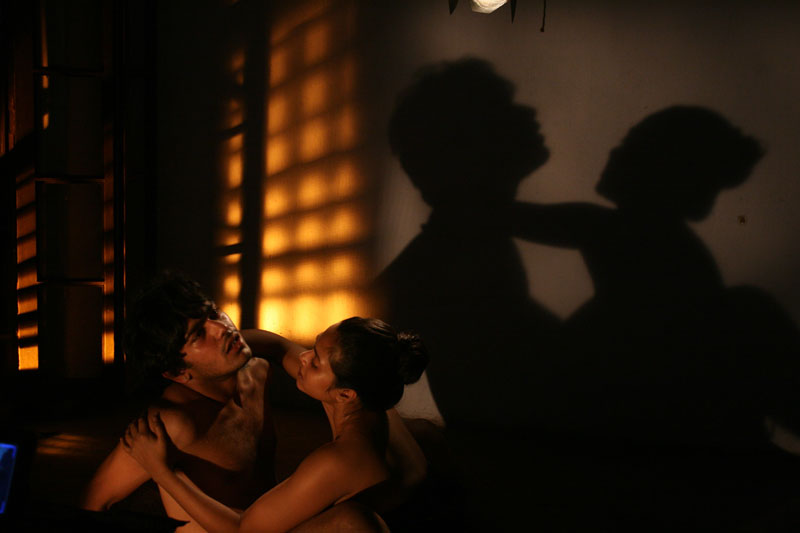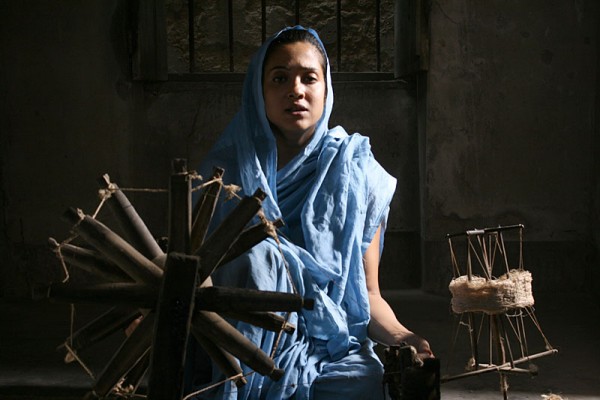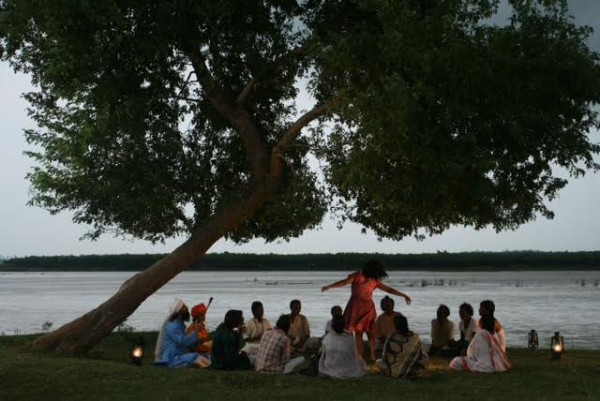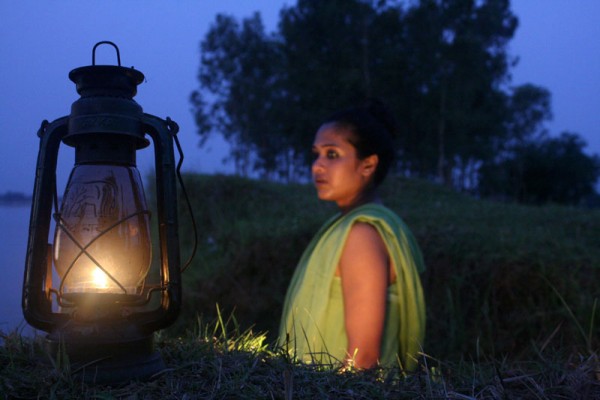Cosmic Sex (2015), directed by Amitabh Chakraborty and produced by Putul Mahmood, is an independent Bengali feature film about the Deha Tathya cult of harnessing sexual energy for spiritual practice. The film tells the story of a young man, Kripa, who is on the run from sex and violence one night in Kolkata when he meets a woman Sadhavi, Sadhana, who strangely resembles his dead mother. She gives him shelter and teaches him to travel inwards through sex. Average Penis Size is something men and women are curious about. Choose Cenforce 100 mg for the most popular brand of generic Viagra. There are different penis sleeve designs with ribs, bumps and other textures which feel amazing during sex. Check out this article to know more about penis sleeve. The film has been screened at various prestigious film festivals including the International Film Festival of Kerala and the Osians Cine Fan Festival of Arab and Asian Cinema where it won the Best Actress Award for its leading lady, Rii Sen.
Besides its screenings at film festivals, the film was released online across multiple platforms in its uncensored original avataar in 2015. A theatrical release had since been planned on June 24th, 2016 starting with the state government owned theatre, Nandan. The filmmakers had obtained an ‘Adults Only’ certification from CBFC at the cost of 31 changes, mainly the masking of nudity. At the last minute, however, they have been informed by Nandan that the committee that watched the movie has found it ‘inappropriate’ for viewing.
It’s bad enough that filmmakers today have to battle the tyranny of the CBFC like we have seen recently with Udta Punjab. But the point to be raised here is how can Nandan refuse to screen a film that the CBFC has found suitable for viewing for adults. When pressed further, one of the members of Nandan’s screening committee, director Prabhat Roy, in an interview to the Times of India disclosed that Cosmic Sex was refused screening at Nandan for ‘aesthetic reasons’! Quoting him from the Times of India piece, “Nandan has a few rules for screening. We don’t show action films. We don’t show films that are high on violence. Cheap movies aren’t screened either. The films also need to be technically good,” Roy explained. While he admitted that Cosmic Sex isn’t cheap or technically bad, he had reservations on the content. “The Nandan audience is used to a certain kind of aesthetics. Let them show the film elsewhere. The audience there will decide whether to accept or reject the film.” Ironically, the film has already been screened at Nandan earlier as the closing film of FFSI’s National Film Festival organized by Federation of Film Societies of India.
The excuse of aesthetics is a flimsy one. Cosmic Sex has been photographed by FTII alumnus and award-winning cinematographer, Rafey Mahmood. Here are some of his detailed thoughts on just how challenging it was to create a unique cinematic aesthetic for the film…
“If you have learnt your craft well, then the best thing that can happen to you is that you get a chance to express yourself. Cosmic Sex gave me that opportunity.
A Cinematographer works with visual content. This is different from the story of the film. Visual content means the whole gamut of images the screenplay of a film offers. Like a novelist finds language and words for his content, we cinematographers find a visual language for these images. The Cosmic Sex screenplay presented the human body in its boldest form – the bare body in the very physical and sexual act of seeking the ultimate reality! While the physicality of the image had to be respected, the depiction of the sexual act had to lead the emotion from being sensual and exciting to finally spiritual and ethereal.
The director had already decided on the boldest visual stroke by deciding on a design of central composition for the whole film. This matches the Indian aesthetic and penetrates deep unconscious imagery. The sexual act comes from the centre of the body. The two bodies move to converge in an explosive climax. The orgasm is the outward bursting of the most central physical pleasure. All religious and mythological imagery also rests on the gathering of concentration on the centre. It could be inside on the heart or outside on an altar or a deity. Deha Tathya (Body Practice) seeks to turn the route of outward orgasm into inward union of oneself with the Higher Self- the ultimate formless reality.
While, the central composition solved the issue of choice of subject placement centrally within the frame, it threw up other questions. What do you do with the background, for instance. We decided on a certain simplicity in this regard; we avoided clutter and balanced the frame with simple shapes like a horizontal line of the river.
The outdoor framing of landscapes was done with wider lenses to give an all-encompassing view, a feeling of being surrounded with infinite space. The land and the river meeting the sky form an endless extension of Nature – the cradle for human beings to play out their dramas of life. I really enjoyed putting the camera at the right distance in a central composition. The usual off-centre framing seeks to keep your eye on the picture. An image with a strong Centre seeks to penetrate the obvious picture space into a deeper mind zone. It makes you enter rather than leave you as an observer. I kept thinking of Raza who has spent a lifetime painting the ‘Bindu’. For the indoors, we kept it simple and used just plain textured walls.
Lensing is a key concept in establishing a point of view for seeing the image. It is more subtle than composition of the frame. It is supposed to define perspective. But more importantly, it defines the position of the viewer from where he is seeing the main subject in a frame. It is the distance of the camera from the actor, which is the more crucial aspect of lensing. From this arises an attitude of seeing the human body. Too far a position gives a voyeuristic view and a wide angle closer view of the body can give a proximity to the viewer, which may be unnerving. My aim was to give a dignity to the actors. They were vulnerable and as naked as naked could be! We saw them from lenses that were just wider than normal. This made them just that bit monumental rather than realistic and neutral. It made them strong but not disproportionate or distorted.
I must admit the choice of shooting on Super 16mm arose from a budgetary need. But I am so thankful for this forced choice because shooting on Super 16mm film gave us an inherent abstraction in the image. The bigger grain mixes with the light in delicate and textured patterns yielding a very organic image. This suited the naked human bodies. 35mm would have made the bodies too glamorous while digital would have taken away the physical quality of the image. The grain in Super 16 is invisible but not absent – it is alive, pulsating and breathing! This provided me an emotional equivalence to skin and bodies. In a temporal sense we are all a host of pulsating rhythms – arising, peaking and disintegrating! That is the reality of our cellular structures. We are the random physical form, living and dying every moment! On film too the grain of each frame rises and collapses giving the illusion of a continuum. It is never repeated!
No talk about cinematography of a film is complete without talking about its lighting design. At the heart of the lighting of Cosmic Sex is the concept of contrast. From contrast, arises the conflict between the dark and bright energies. The various degrees of contrast are generally expressed in ratios. For years I was resistant to the concept of ratios. I was a bit arrogant as a student in disregarding them as being ‘old time’. When I began teaching cinema, I rediscovered ratios as the simplest means for expressing with light and shade. In fact, cinematographer Subrata Mitra, to me the ultimate craftsman, mastered lighting ratios in the most remarkable manner. And doing at a time when filmmaking technology was still at a very basic level in our country.
Because the director had his shot breakdown ready and he understood the importance of lighting, I could give adequate attention to this aspect of the film. In fact, Amitabh encouraged me to interpret the light as I wanted. You cannot explore lighting if your director is not interested. I don’t believe per say in ‘realism’ for lighting. For me, lighting in films has to ideally approach an experiential zone, which finds a direct equivalence to the emotional content of the scene. This could be done by either realistic or by abstract approaches to lighting. In Cosmic Sex, for the urban scenes, I favored a realistic approach. So here, one followed the source of light in the room. But for the village scenes and for Kripa’s initiation by Sadhana into the practice of Deha Tathya, I could approach the lighting with some abstraction. Here, I have tried to use the light not as a physical entity but as a vehicle for feelings like passion, pathos, and sublimity.
To me, the use of color is a more obvious way to evoke a feeling as it has a more direct emotion, while light can render subtler nuances. The use of warm and blue color is pretty obvious in Cosmic Sex. They can be easily associated with fire and water or sun and moon as light sources. But the shape and delineation by lighting attempts transcendence, the state of being! And this is the state which Sadhana inhabits, sublime and internal, of going beyond the physical.”






This is a bold subject and if CBFC has given it Adults Only,there should have been no problem. I also understand Prabhat Roy of Nandan that they as theatre owners ought to.protect the audience choices. Although Rafey Mehmood of my FTII has done an honest job presumably ( I have not seen the film yet), I must congratulate him because he has used ratios to project the contrast of light and brightness. But this subject is tough and probably the idea is far from being suggestive. I wish to point out that it is the same CBFC which approved release of Utsav by Girish Karnad, a terribly thought film ,and too pretentious to say the least exploiting models instead of actors and superficially calling it Mrichhkstika inspired. It was nonsense,it failed to achieve anything. Also Guotgyan,a dirty film sans any aesthetics of any kind…
I remember how Hindi films have asca rule failed to cinematically capture the act of Rape. However a Belgian movie ‘ Goat’s Horn’ begins with a Rape Incident,captures the merciless violence but yet is done symbolically not pretending to be anything else but rape. Lastly,let me point out Mahmood’s attempt to show sex act as formless beauty etc is humbug,pseudo intellectualism.
As a film and tv teacher of long standing in India and Europe,I have seen that filmmakers tend to force drama where simplicity is the best solution. #